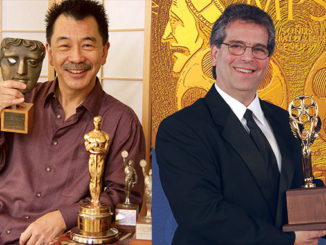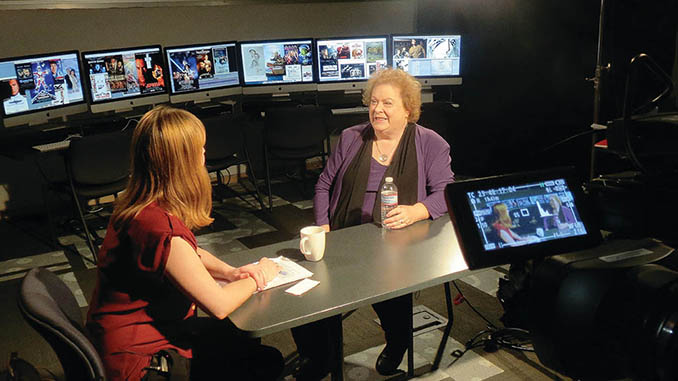
By Andrea Van Hook
Things have definitely changed for women in Hollywood. There are more women executives and producers than ever before, and some are now running studios. While women cinematographers remain woefully underrepresented, and the status of people of color, who are active behind-the-scenes, is troublesome, there are definitely fewer pockets in the industry which are exclusively white and male dominated. How has this societal change affected women in post production?
Historically, women have been an accepted and important part of picture editing, rising to the top of that profession from its earliest beginnings. During the 1930s, when the Academy of Motion Picture Arts & Sciences established the Academy Award for Best Editing, four women were nominated seven times. Numerous women have been nominated in that category every decade, and 11 have won. In Sound, the numbers are much less. Three women have won Academy Awards for sound editing, while a woman has yet to win an Oscar for sound mixing.
Cece Hall, one of three women to win an Academy Award for sound editing, entered the business at a time when women were a rarity. “When I started at Paramount, there were 26 guys, and I was the only girl,” she said. “To paraphrase the famous quote, I did feel I had to work twice as hard to be regarded as only half as good as the men. Still, I had terrific help and support from my male colleagues.” She believes that sound has lagged behind picture editing in the numbers of women working because it has been regarded as very technical. “There are many more women now, particularly supervising sound editors,” she said. “It’s a great career for women.”
Roughly 23% of the Guild’s membership is women, while nationwide, women comprise over 50% of the population and just under half of the work force. No definitive study of women in post production has ever been done. However, a 1998 study of behind-the-scenes employment of women found that 20% of the top 250 films, as defined by domestic box office gross, had female picture editors. Other findings showed that female picture editors tended to work on the lower-grossing films, suggesting a “velvet collar ghetto,” and that films with female directors employed 80% more women than films with male directors.
“Studios now have daycare available for executives, but not for freelancers,” – Farrel Levy
“Women in positions of power on every level make it better for women editors and women assistant editors,” said Farrel Levy, editor for “NYPD Blue.” In certain areas of post production, things have definitely changed. “I’m very seldom the only woman on the floor anymore,” said Ruth Adelman, Emmy award-winning ADR supervisor for CSI. “At Todd-AO, there are women working in all aspects of post production.”
According to Hall, two women – Sarah Monat and Robin Harlan – run the Foley stage at Paramount, while most of the other Foley stages in town are either all male or dominated by men.
In certain areas, women still seem to be rare. Melissa S. Hofmann, a sound re-recording mixer at Todd-AO and former president of the Cinema Audio Society, is one of the few women in that position. “Women might not think of becoming a mixer, or don’t want to, because it’s very demanding in terms of hours” she said. “A lot of men don’t want to do it, either.”
Victoria Rose Sampson, a supervising sound editor, dialogue and ADR editor, believes that there were more women when she first entered the business in 1973. Sampson, the daughter of legendary sound editor and supervisor Kay Rose (the first woman to win an Academy Award for sound editing), sees some troubling trends due to the fact that sound editors are becoming specialized.
“In my mom’s heyday, she was often the only sound editor – she was the supervisor, the dialogue editor, and the effects editor,” said Sampson. “Today, because of tight schedules, shows have two co-supervising sound editors. Usually one handles sound effects and Foley, while the other does dialogue and ADR. For some reason, sound effects have become “boy” sounds, while dialogue and ADR editing are “girl” sounds, even though most of us can do it all.”
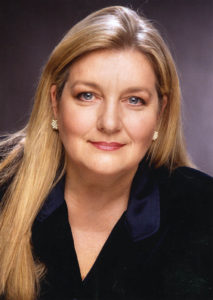
Cece Hall, Academy Award winner in sound editing for “The Hunt for Red October” and now senior vice president of post production sound at Paramount, would like to see more women becoming sound designers.
“Supervising sound editors, who also are acknowledged as sound designers, tend to be male,” she said. “I find it unfortunate that more women are not going in that direction.”
The issue of balancing work and family life can mean tough choices in terms of job opportunities. “Even though I have a very supportive husband, I want to be around while my children are growing up,” said Levy. “That limits my ability to go on location, and I choose not to take the jobs with the endless hours.”
Stephanie Casey, a first assistant editor and Guild board member, believes she couldn’t do her job and have a family. “I think that if I did have a family, I’d become a post production supervisor, or a second assistant editor, where I’d have more flexibility with my schedule,” said Casey. “I’m aware that if and when that time comes, I can’t do the job that I’m doing right now.”
Margie Goodspeed did not accept any studio jobs with previews in the schedule until her daughter was five years old. “I knew I had to do a studio job like Lizzie McGuire soon, or I might not be considered for movies with higher budgets,” she said.
Hofmann, who has a three-year-old daughter, credits her husband for allowing her to continue in her career. “He’s very supportive of me, and he is the primary caregiver of our daughter.” she said. “There are many people who, once they’re established, have kids and it doesn’t effect their careers.”
None of the women interviewed, who have children, felt that the quality of their work was affected as a result. “When I became a mother, my time became so valuable that I cut out all of the distractions,” said Goodspeed. “I now focus completely on the work and the quality is just as good , if not better.”
Due to changing technology, it’s now possible to work from home. Goodspeed cut two movies while working from home. “The first time, It was a lower budget movie, and that worked well because we didn’t have a lot of people coming in and out,” said Goodspeed.
“For some reason, sound effects have become “boy” sounds, while dialogue and ADR editing are “girl” sounds, even though most of us can do it all.” – Victoria Sampson
Despite definite change, there is still a stigma for women with children. “There are some situations where bringing up the idea of family can make a director uncomfortable, and you have to work extra hard to prove yourself,” said Levy. “Once you have a child, the first question you’re asked is whether or not you can travel,” said Goodspeed. “That’s actually a really valid question in this business.”
Sampson believes that there remains a prejudice against parents. “There’s this belief that if you don’t have kids, you could be here for us 16 or more hours a day,” she said. “Supervisors, in particular, are expected to just open their veins and bleed for the cause, which I don’t think is healthy.” Goodspeed maintains that, in the majority of cases, employers don’t realize what they are actually demanding when they ask their employees to work so many hours.
In terms of facing discrimination on the job, most of the women interviewed believe that issue was thankfully in the past. Sampson recalled a story that her mother told of a job interview for a submarine picture, and being asked, “What does a woman know about submarines?”
“There was a male editor also being interviewed, and he said he didn’t know anything about submarines, either,” Sampson said. “He got the job since he had a ‘family to support,’ even though my mother was supporting her family (me) at the time, too.”
Some women believe that their salaries are comparable to men doing the same jobs, while others aren’t sure. “Most editors, in general, don’t get paid as much as we should, but I don’t know if it comes down along gender lines,” said Levy.
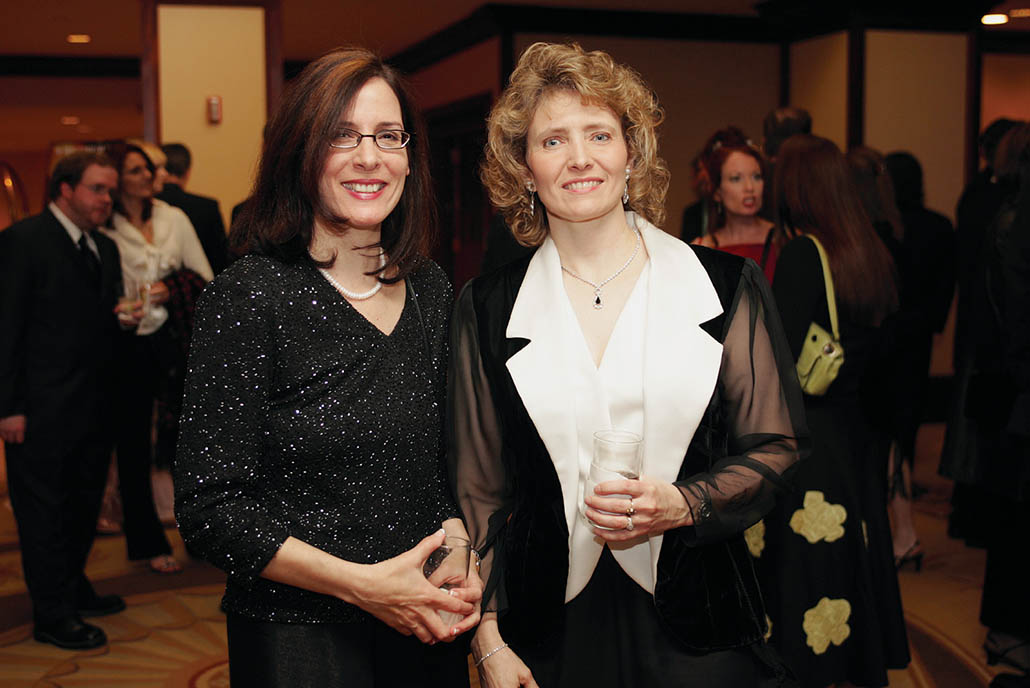
Having a scale in terms of wages ensures a certain level of fairness, according to Adelman. “Anything above scale is a personal negotiation between someone and their employer,” she said.
Casey tries to put together cutting rooms where she thinks everyone will get along easily and, in her opinion, that’s balancing the number of men and women. “While I think a balance is nice, I certainly wouldn’t hire someone strictly based on their gender,” she noted.
Could the union do more to encourage the promotion of women in post production? Most of the women interviewed just weren’t sure. “I wouldn’t want to get a job because I’m a woman,” said Sampson. “I’d want to get a job because I’m good at what I do.”
There were many suggestions to help people with children that would benefit both men and women. “Studios now have daycare available for executives, but not for freelancers,” said Levy. “It would be wonderful if the union could help Guild members access daycare while working on a lot.”
Other suggestions included keeping a list of daycare centers (especially ones with longer hours), developing a data bank of schools, or providing a registry of child care and home care workers.
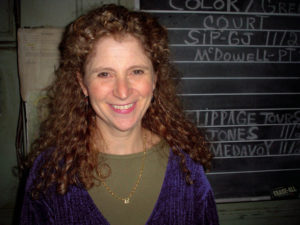
Hall stressed the importance of training as the great equalizer. “Knowing the technology is critical,” she said. “The people who do are getting the jobs.”
All of the women interviewed recognize that the changing nature of the business is putting pressure on everyone. Hofmann feels that spousal health benefits are a growing concern among her colleagues. Casey believes that involvement is the key. “We need to better communicate to our Guild members what the union policies are; what the Guild is doing to keep our standing in the industry; and most notably of late, in protecting our health insurance,” she said. “If all our members bond together, we will be a very strong force.”
Levy added, “If better opportunities for women and minorities are important to us, we have the chance to promote that when we crew up our cutting rooms. When cutting rooms diversify, we are all richer for it.”
Goodspeed stressed the importance of being proactive. “My being a mother makes me who I am, and I have something of value to offer because of that,” she said “If we remind people that it’s valuable to them, too, that’s…the best we can do.”



